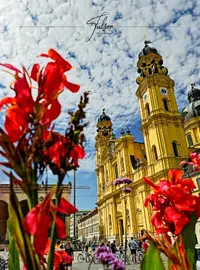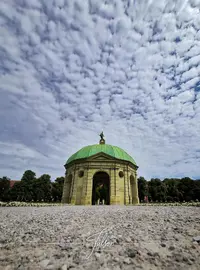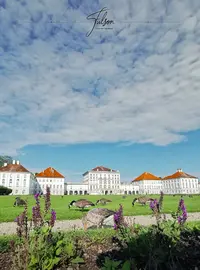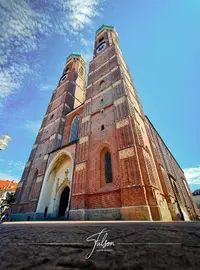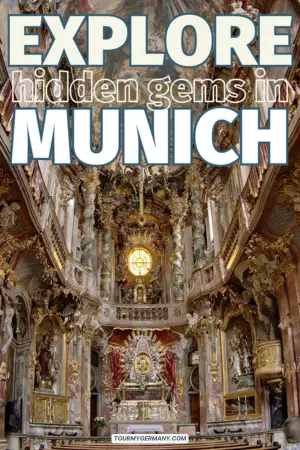- Home
- Top German Cities To Visit
- Munich Hidden Gems
6 Munich Hidden Gems: Amazing Secret Spots to Discover
By: Eran Fulson / Traveler & Blogger / After 15+ years of travel across North America and Europe, I now help travelers experience Germany beyond the guidebooks with firsthand tips and cultural insights.
Published: October 24, 2024 | Updated: February 6, 2025
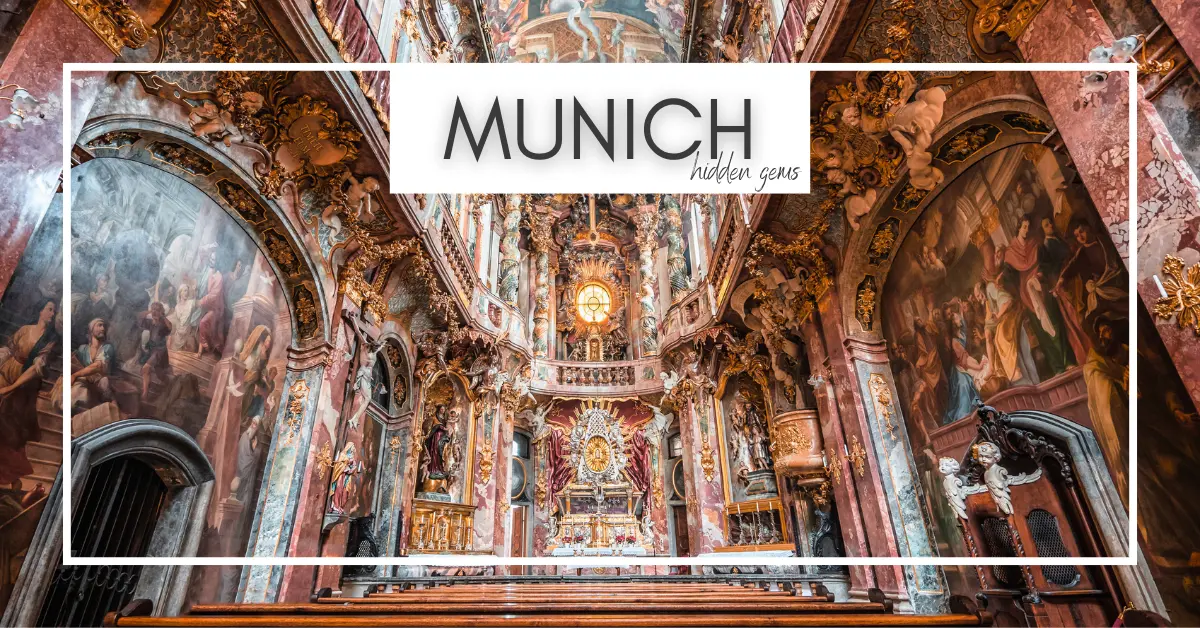 When is too much ever enough?
When is too much ever enough?Are you ready to explore beyond the usual tourist spots and find the amazing 6 Munich hidden gems? This city is full of hidden treasures for those who love to discover new things. Munich's secret spots will amaze you and should definitely be on your next Germany travel itinerary.
There are so many architectural gems throughout Munich that it's easy for a few to not make it on the traditional itinerary shortlist. But that's not to say they're any less impressive.
I'll showcase amazing underrated locations like the Asamkirche, a stunning Baroque church that shows off the talented Asam brothers' skill. Or a walk through Blutenburg Castle and its serene greenery.
For a taste of Munich's food scene, visit the Viktualienmarkt. This market has been a German tradition for over 200 years. You can try fresh food, cheeses, and dishes from all over the world. Make sure to eat at Fisch Witte, a market restaurant known for its seafood.
To get away from the city's noise, relax along the Isar River or go to Roseninsel (Rose Island). This beautiful garden was an island summer home for Bavarian kings Maximilian II and Ludwig II. It's a peaceful place with lush landscapes and old buildings.
Personal Gallery of Munich:
Key Takeaways for 6 Munich Hidden Gems
- Explore the ornate Baroque masterpiece, Asamkirche, and the towering Statue of Bavaria
- Indulge in fresh produce and artisanal foods at the bustling Viktualienmarkt, a German tradition for over 200 years
- Escape to the romantic Rose Island in Lake Starnberg, or find your chill on the banks of the Isar River
- Discover hidden gems in Munich, from architectural landmarks to vibrant markets and serene green spaces
- Immerse yourself in the city's rich history and authentic experiences beyond the tourist hotspots
 Take the path less traveled.
Take the path less traveled.On this page:
1: Roseninsel - Your Royal Serenity
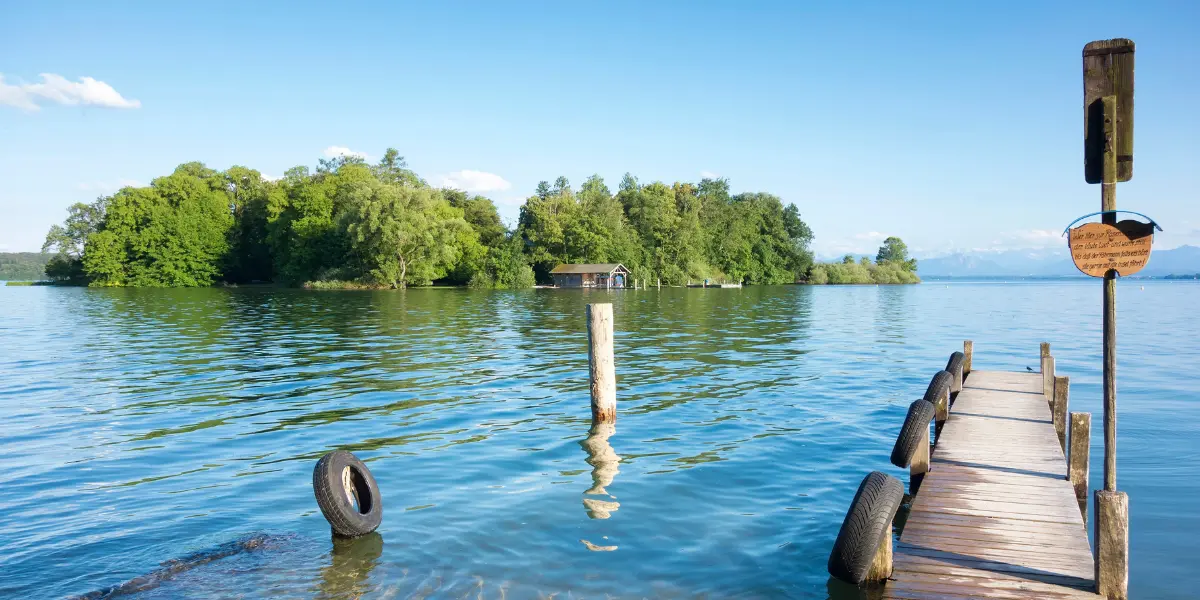 You couldn't pay me to leave.
You couldn't pay me to leave.One of Munich’s best-kept secrets is Roseninsel (Rose Island), a little slice of paradise nestled in Lake Starnberg, just outside the city. This charming island is the only one in the lake and has a fascinating history that dates back centuries.
Rose Island became famous in the 19th century when King Ludwig II, Bavaria’s “Fairy Tale King,” made it his private retreat. He wasn’t the only royal to fall in love with the island; Empress Elisabeth of Austria (Sisi) and Russian Tsar Alexander II were frequent visitors.
The island still has that royal charm, with the small villa, Casino, that once served as Ludwig’s summer hideaway, offering a glimpse into the opulent life of Bavarian royalty.
 This ticks every box for me.
This ticks every box for me.What makes Rose Island so special today is its stunning rose garden, with over 1,000 different varieties of roses blooming in the summer. The island’s peaceful and secluded atmosphere makes it a perfect escape from the busy city life. Visitors can take a boat ride from the nearby village of Feldafing to reach the island, adding a fun twist to the trip.
While the island is relatively small, it’s a perfect spot for a relaxing afternoon. You can wander around the rose garden, take in the beautiful lake views, or have a quiet picnic. Guided tours of the villa are available, offering a deeper insight into its royal past.
If you’re looking for a hidden gem around Munich that combines history, nature, and a bit of royal flair, Rose Island should be on your list. It’s a peaceful oasis that feels worlds away from the hustle of the city.
2: Isar River - Urban Relaxation
The Flaucher
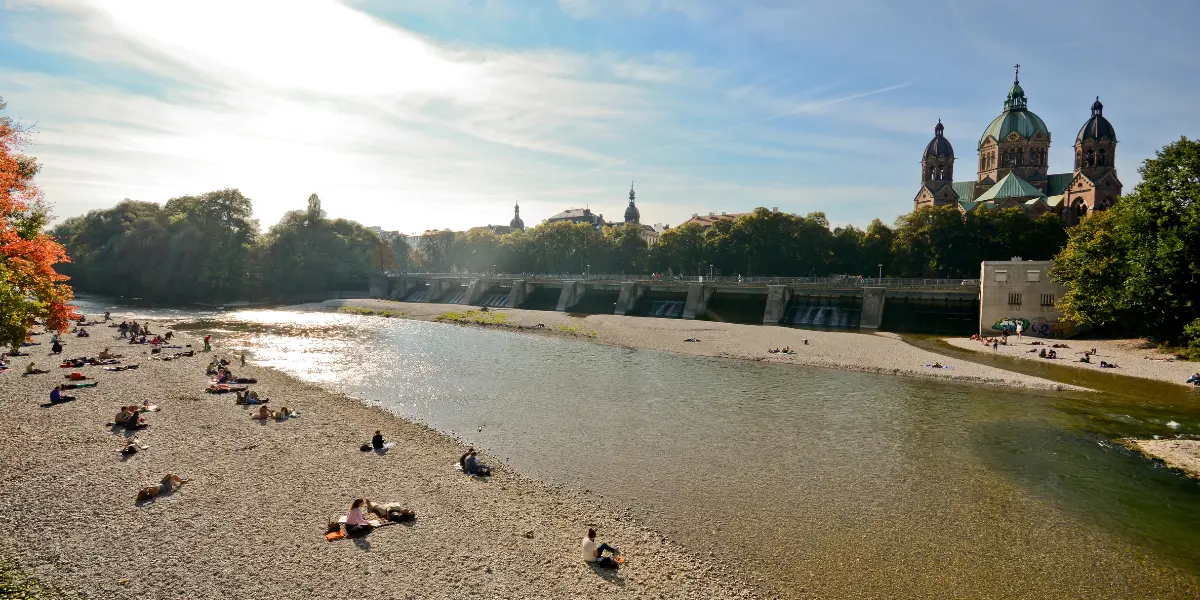 What a beautiful backdrop to relax by.
What a beautiful backdrop to relax by.Sneaking in under the more broadly known Isar River, the Flaucher and Eisbach Wave are true Munich hidden gems.
The Flaucher is one of Munich's best-kept secrets for nature lovers and outdoor enthusiasts. Located along the banks of the Isar River, this peaceful area is a favorite spot for locals looking to escape the city without actually leaving it. The Flaucher offers a series of gravel islands, shallow waters, and grassy riverbanks, making it ideal for picnicking, sunbathing, and swimming during the summer months.
One of the Flaucher's unique features is its grill zones, where people can bring their own barbecues for a cookout right by the river. It's a great place to gather with friends, relax, and enjoy the natural beauty of the Isar. There are also lovely walking and cycling paths that stretch along the river, giving you a chance to explore more of Munich's green spaces.
Eisbachwelle (Eisbach Wave)
The Eisbachwelle, a man-made wave, has drawn surfers for decades. It's a top spot for urban surfing, attracting skilled surfers worldwide. For 40 years, it's been a favorite, even making the top 100 most beautiful beaches list in 2024.
Imagine the rush of watching skilled surfers on the Eisbach wave. Up to 100 surfers ride the wave daily in summer, all eager to show off their skills. Surfing happens all day, every day, so you can catch the action anytime.
But, only experienced surfers should try the Eisbachwelle. The water is shallow, and there are strong currents and hidden blocks. Though not always adhered to, it's obviously advised to wear a helmet to avoid injury from the stones below.
Watching from a distance is just as exciting. People gather on bridges or banks to see the surfers. They marvel at the tricks and determination. Surfing here officially started in 1974, when American students first surfed, despite being technically banned until 2010.
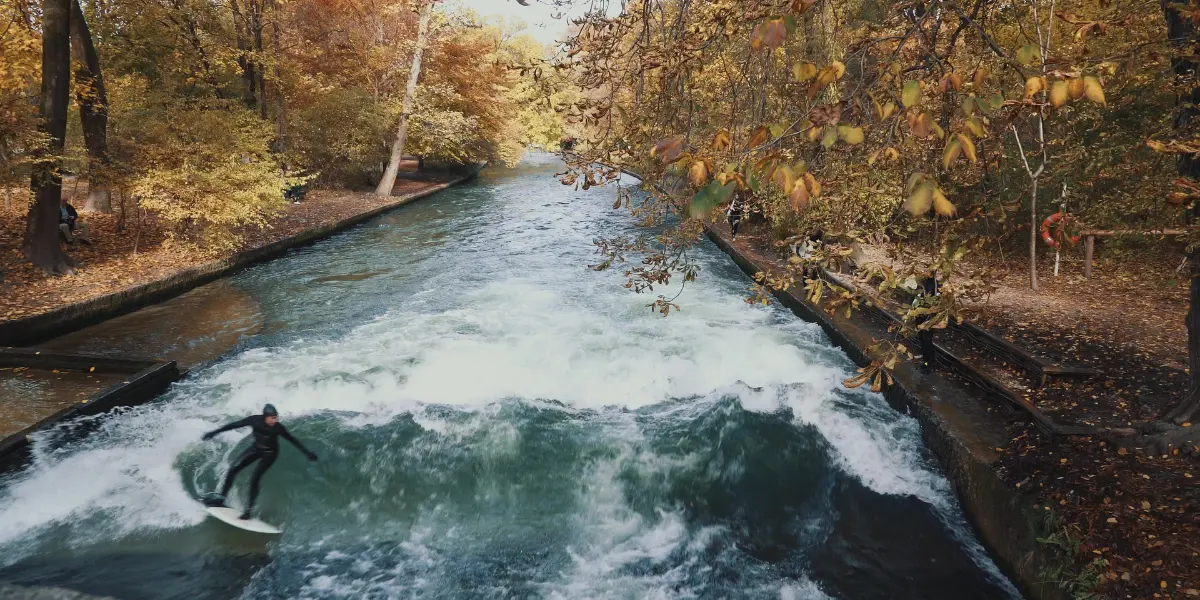 Surf's up.
Surf's up.The Eisbachwelle history is as interesting as the surfing. The original wave was completely natural, but only for a few weeks a year when gravel accumulated and partially blocked the water's flow. Eventually, concrete blocks were installed to help control the flow of the river and wound up creating the now famous Eisbach Wave.
In the 1980s, Walter Strasser stabilized the wave with a railway sleeper. Unbelievable as it sounds, it was enough to create a consistent surfable wave in the heart of Munich.
Check out the video below of Red Bull surfers taking on the famous inner-city wave.
3: Asamkirche - Extreme Baroque
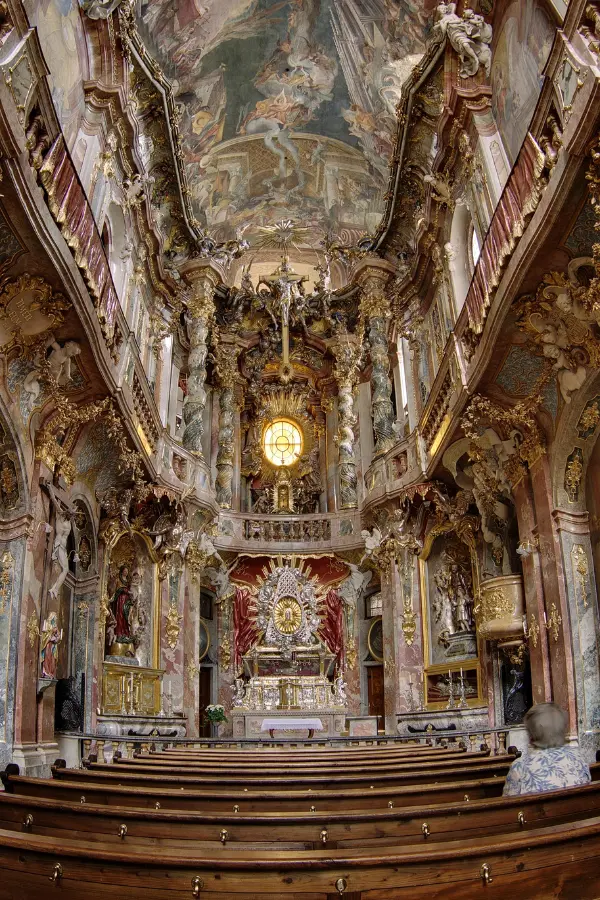 If the dictionary ever needed an image for "opulent"
If the dictionary ever needed an image for "opulent"In the heart of Munich, a literal hidden treasure awaits. The Asamkirche is a stunning example of Baroque architecture.
Built from 1733 to 1746, it showcases the genius of the Asam brothers, Cosmas Damian and Egid Quirin. Born in 1686 and 1692, they were key figures in Bavaria's Late Baroque movement.
The church's cornerstone was laid on 6 May 1733. Prince-Elector Maximilian III Joseph was there, highlighting its significance.
Entering the Asamkirche, you're greeted by its detailed beauty. Dedicated to Saint John of Nepomuk, it reflects the Asam brothers' deep faith. The church's architecture, stuccowork, and frescoes demonstrate their artistic prowess.
Despite its small size, the Asamkirche is an architectural marvel. It's only about 8 meters wide but is packed with beauty. The brothers built it on a tiny plot, creating a masterpiece that's just 8.8 meters wide and 22.2 meters long. Its design, with a unique bell tower, shows their creativity in spades.
The Asam brothers were known for their hard work and travels. Cosmas Damian Asam showed his talent early, winning an art competition in Rome in 1702. Their church is a testament to their skill and family ambitions.
Today, the Asamkirche is a key Late Baroque building in southern Germany. Its interior and architecture still wow visitors. It offers a peek into the Asam brothers' talent and dedication. Take time to appreciate this Baroque masterpiece and its rich history.
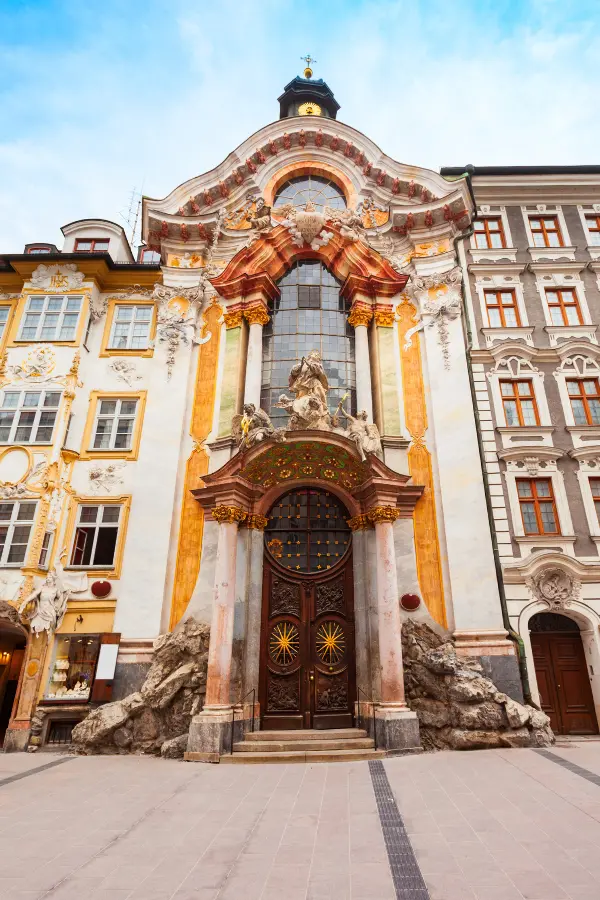 Subtlety in moderation.
Subtlety in moderation.4: Viktualienmarkt - Indulgent Flavors
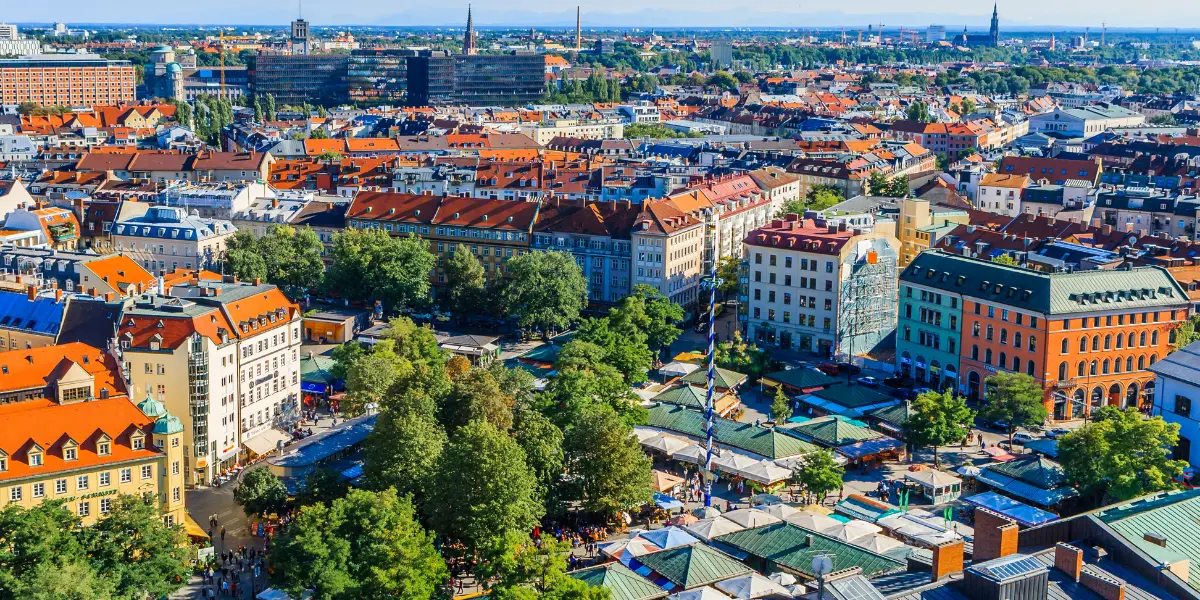 A foodie's oasis.
A foodie's oasis.Step into a world of culinary delights at Viktualienmarkt, Munich's oldest and most renowned farmers market.
This vibrant market, which has been operating since 1807, boasts over 140 stalls offering an incredible array of fresh produce, artisanal foods, and local specialties.
As you wander through the bustling aisles, let your senses be captivated by the enticing aromas, vibrant colors, and lively atmosphere that make Viktualienmarkt a true foodie paradise.
Savor Fresh Produce and Artisanal Foods
Immerse yourself in the rich tapestry of flavors that Viktualienmarkt has to offer. From crisp, locally grown vegetables to juicy, ripe fruits, the market showcases the best of Bavaria's agricultural bounty.
Discover artisanal cheeses crafted by passionate local producers, each with its own unique flavor profile and texture. Indulge in freshly baked bread, still warm from the oven, and let the aroma of handcrafted pastries and pretzels tempt your taste buds.
For a truly immersive experience, consider joining a Viktualienmarkt Food Tasting Tour, which typically lasts around 2 hours. Led by knowledgeable guides, these tours offer an in-depth exploration of the market's culinary treasures, allowing you to sample a wide range of local delicacies and learn about the rich history and traditions behind each bite.
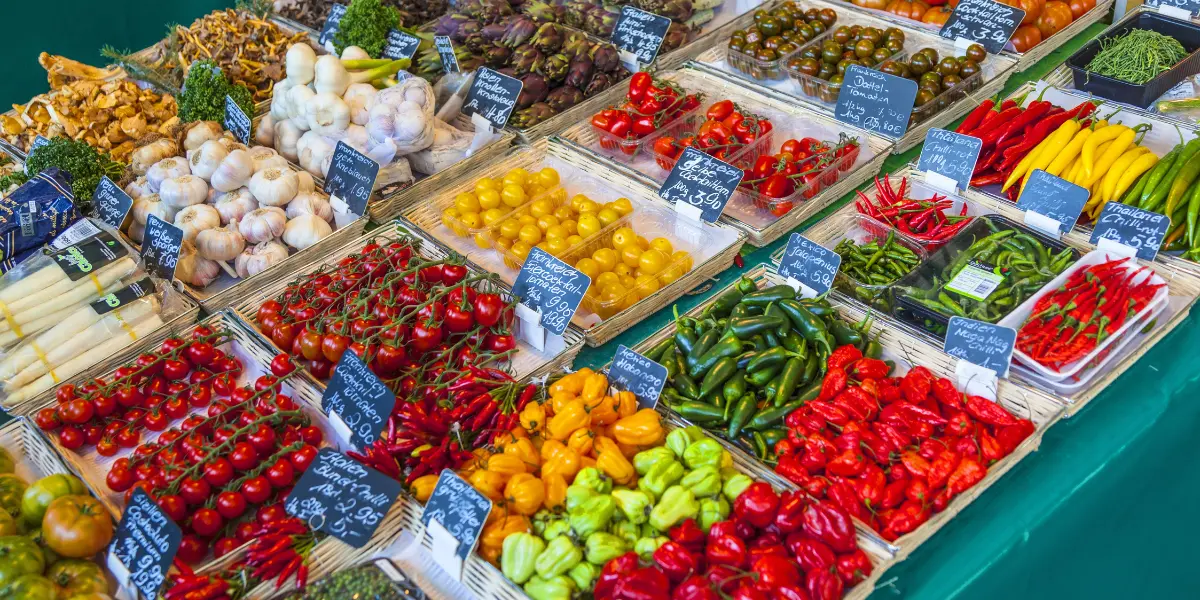 Get cookin'
Get cookin'Immerse Yourself in the Vibrant Market Atmosphere
Beyond the incredible food, Viktualienmarkt is a hub of social interaction and community spirit. Engage with friendly vendors who are passionate about their products and eager to share their knowledge with curious visitors.
With its unparalleled selection of fresh produce, artisanal foods, and vibrant market atmosphere, this iconic market promises to tantalize your senses and leave you with unforgettable memories of your culinary adventures in the heart of Bavaria.
But there's a true hidden gem within this hidden gem - the Viktualienmarkt Beer Garden. Nestled among the market's stalls, the beer garden is a local favorite and is about as an authentic communal Munich experience as you'll find. You just have to find it first.
5: Statue of Bavaria - Scaled Up Majesty
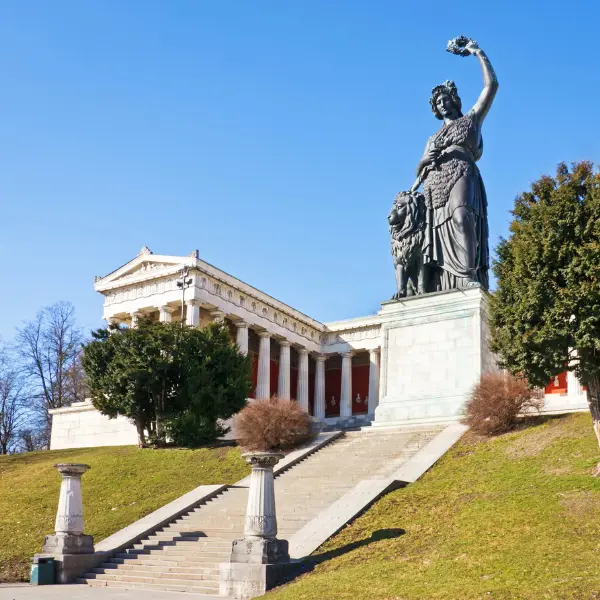 Objects on screen are larger than they appear.
Objects on screen are larger than they appear.For a unique view of Munich's skyline, climb the Statue of Bavaria.
This massive bronze statue sits at the edge of Theresienwiese and offers stunning views of the city.
There are many ways to see panoramic views in Munich's Altstadt. You can climb St Peter's Tower, take the elevator in the Neues Rathaus, or go up the Frauenkirche South Tower. But the Statue of Bavaria gives a special view.
Enjoy Panoramic Views of Munich
As you climb the statue's narrow stairs, excitement grows for the views at the top. At the viewing platform, you'll see a wide view of Munich. You can spot famous sights like the Frauenkirche and the Alps on a clear day.
The statue's height lets you see the city's beauty. You'll see both old and new buildings together. It's a great way to see Munich's architecture.
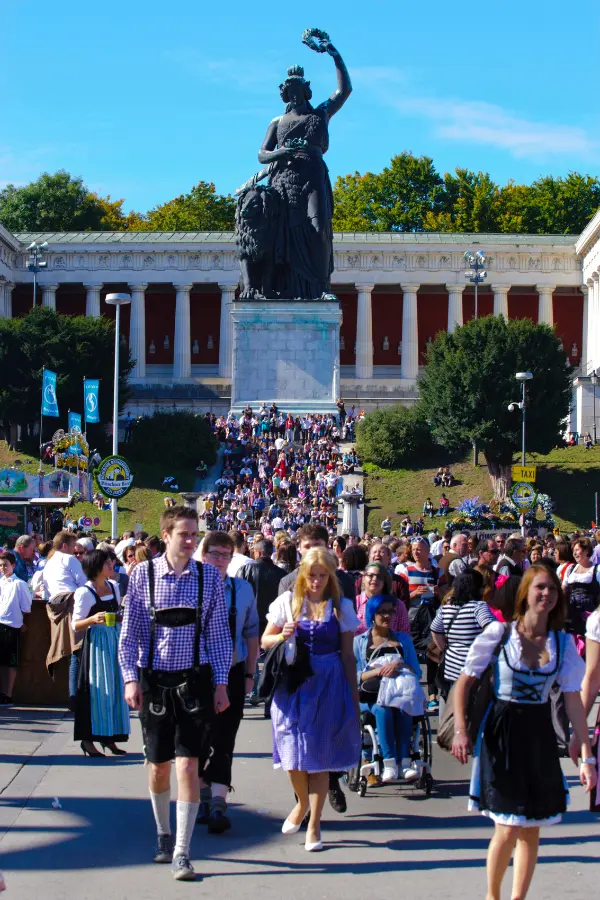 Raising wreaths and steins for Oktoberfest.
Raising wreaths and steins for Oktoberfest.Discover the Statue's Historical Significance
After seeing the views, think about the Statue of Bavaria's history. It was made for King Ludwig I and designed by Ludwig von Schwanthaler. It was unveiled in 1850 as a symbol of Bavarian pride.
The statue is 18.52 meters tall and shows Bavaria as a woman. She holds a wreath and a sword. The pedestal has a lion, showing Bavaria's strength. Knowing its history makes your visit more meaningful.
Climbing the Statue of Bavaria is an adventure. It combines amazing views with a look into Munich's history. It's a great way to see the city and its heritage.
6: Blutenburg Castle - Fairy Tale Charm
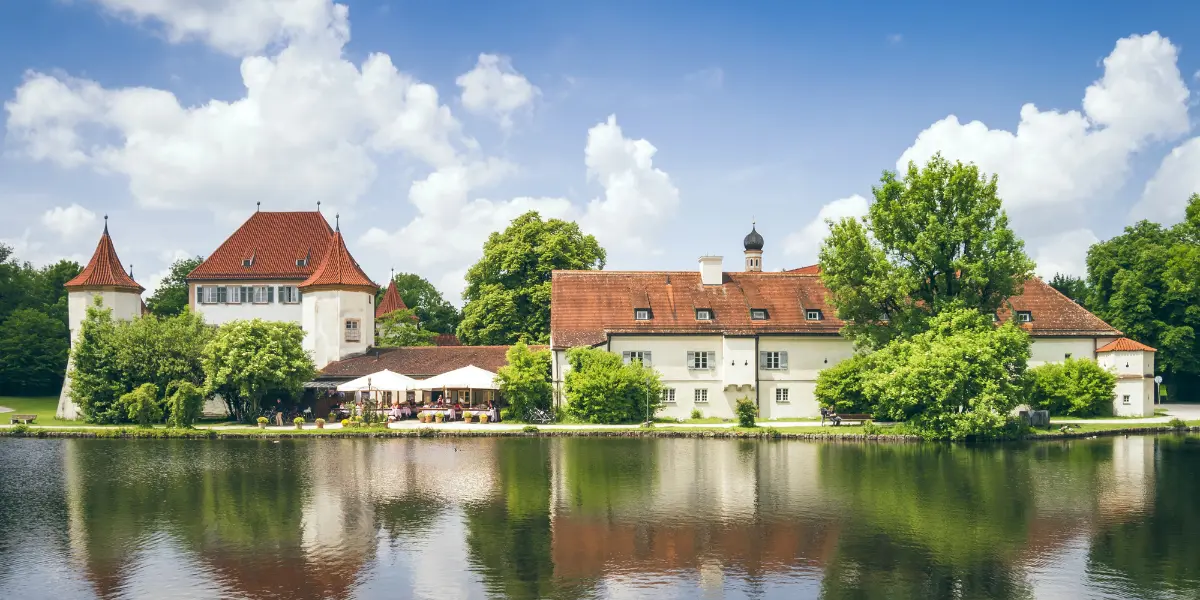 Exchange the inner-city crowds for some Blutenburg charm.
Exchange the inner-city crowds for some Blutenburg charm.Blutenburg Castle is a true hidden gem in Munich, offering a charming escape into Bavaria’s past. Nestled on the western outskirts of the city, this picturesque castle is less known than some of Munich’s grander landmarks, but it’s packed with history and charm.
Originally built as a hunting lodge in the 15th century for Duke Albrecht III, Blutenburg Castle has a fairy-tale feel with its moats, turrets, and serene lakeside setting.
The castle was later expanded and became the residence of Duke Albrecht’s son, Sigismund, who added a Gothic-style chapel, still beautifully preserved today. The Blutenburg Chapel is a must-see, featuring stunning stained glass windows and an intricately painted altar.
What makes Blutenburg Castle stand out today is its peaceful atmosphere. The grounds are perfect for a leisurely stroll, and there’s even a small lake where swans gracefully glide across the water, adding to the castle’s tranquil vibe. It’s the ideal spot for a relaxing break from the city’s hustle and bustle.
The castle now houses the International Youth Library, the largest library in the world dedicated to children’s and youth literature. This gives the place a unique cultural twist, offering exhibitions and events that make it a vibrant cultural hub.
One of the highlights of visiting Blutenburg Castle is the picturesque setting—it feels like stepping into a medieval painting. It’s also a great place to visit year-round, with the castle grounds looking especially magical in the fall and winter.
Conclusion
Don't get me wrong, I'm not knocking the standard Munich travel guide suggestions. But in peak tourist season, it's refreshing to find some calming respite from the shoulder-to-shoulder crowds all trying to cram in their own Munich itinerary.
So the next time you're planning to visit Munich, definitely go to the Residenz or see the glockenspiel display at the Neues Rathaus, but make some time to go off the beaten path. Your camera reel, and sanity, will thank you.
Munich Hidden Gems - FAQ
What's worth seeing in Munich?
What's worth seeing in Munich?
Munich's city center is home to many famous attractions, including iconic buildings, squares, and parks. Whether you're strolling through Marienplatz or exploring the Englischer Garten, there’s always something remarkable to see.
What is the hippest part of Munich?
What is the hippest part of Munich?
The Gärtnerplatz and Glockenbachviertel neighborhoods are where Munich’s trendy crowd gathers. With vibrant cafés, boutiques, and nightlife, these areas are buzzing with creativity and a lively atmosphere.
What is Munich best known for?
What is Munich best known for?
Munich is renowned worldwide for its annual Oktoberfest, drawing millions of visitors each year to celebrate Bavarian culture with beer, traditional food, and music.
Why is Munich called the secret capital?
Why is Munich called the secret capital?
In 1957, Munich's population grew beyond one million. Thanks to its rich history, art, and political influence in the decades following WWII, it gained the nickname Heimliche Hauptstadt (secret capital).
Where is the cool part of Munich?
Where is the cool part of Munich?
Glockenbach is one of Munich’s coolest areas, filled with stylish bars, galleries, and restaurants. It's a hub for both locals and visitors looking for a uniquely urban experience.

